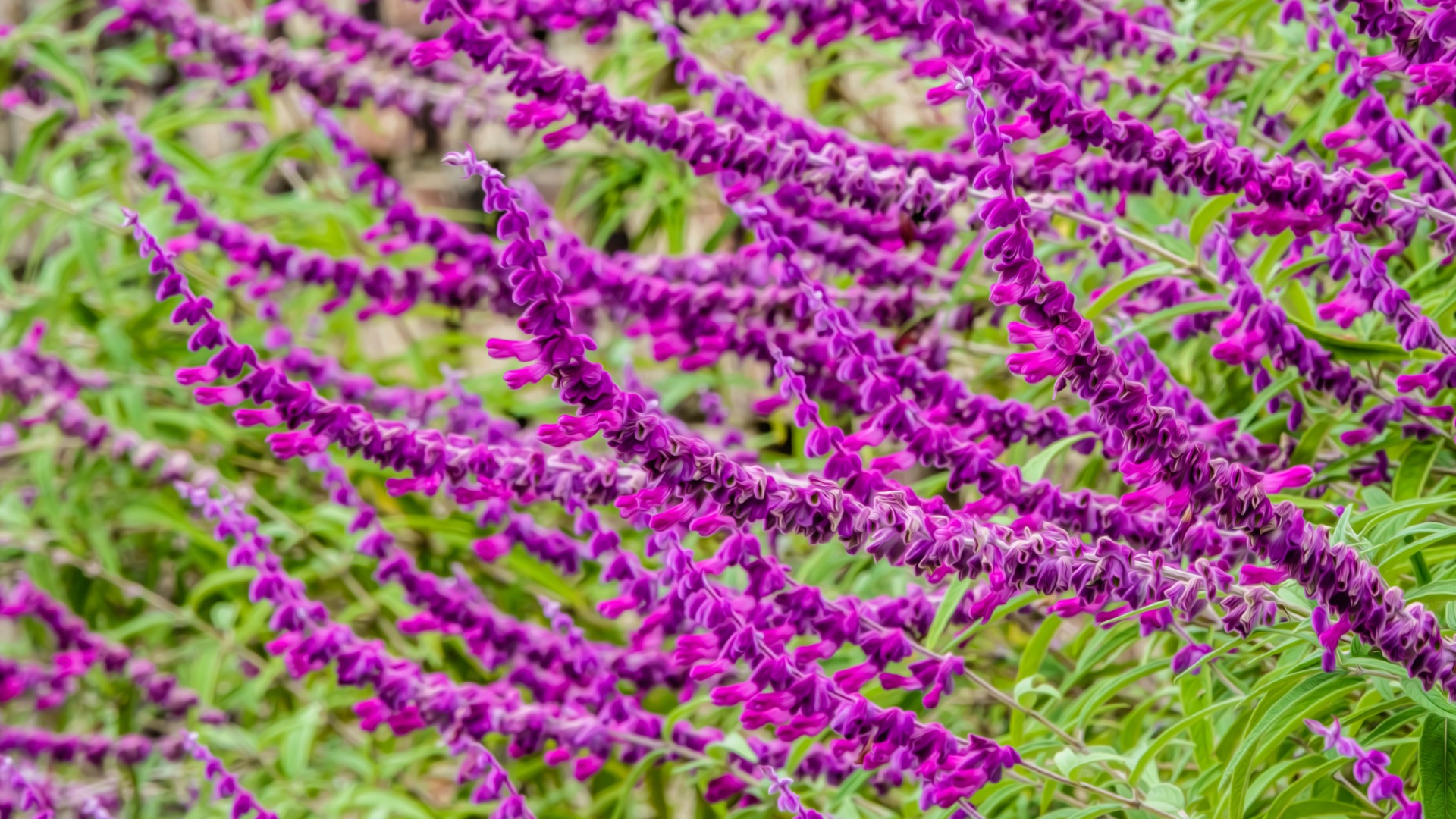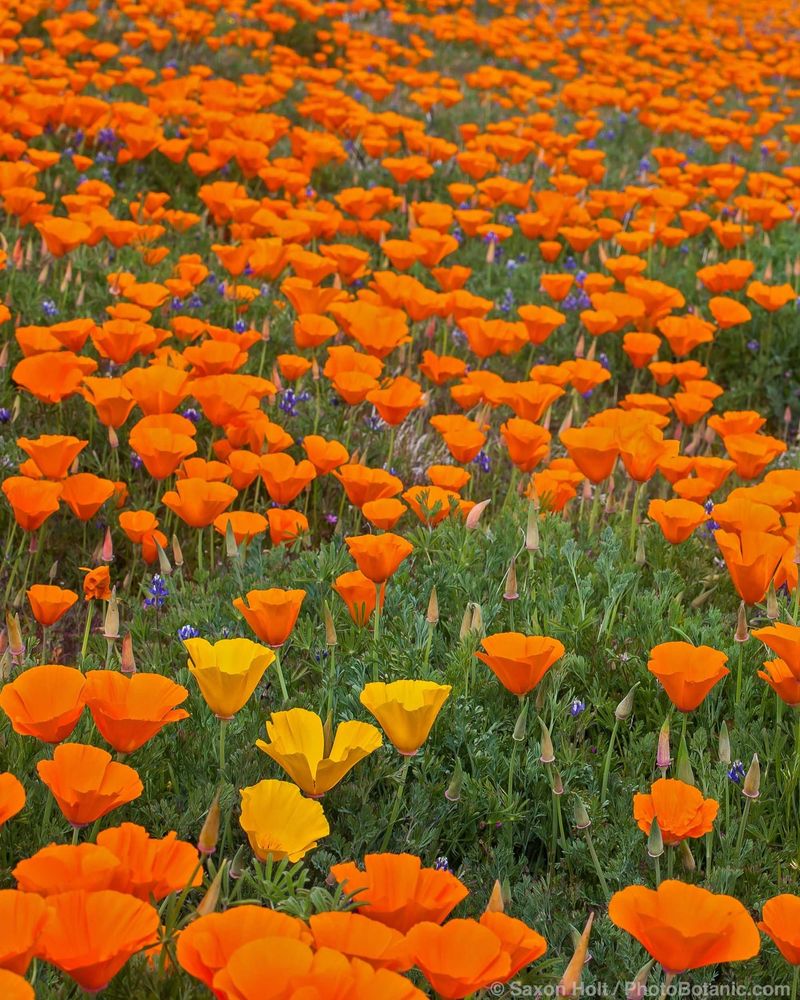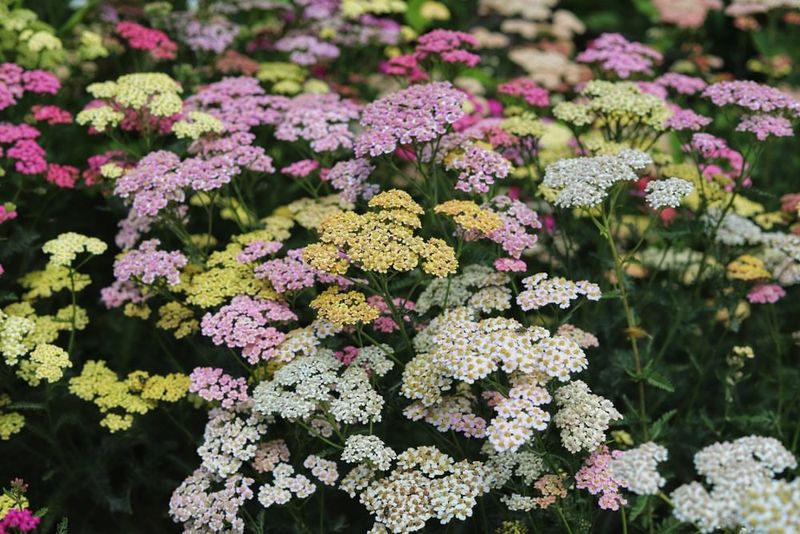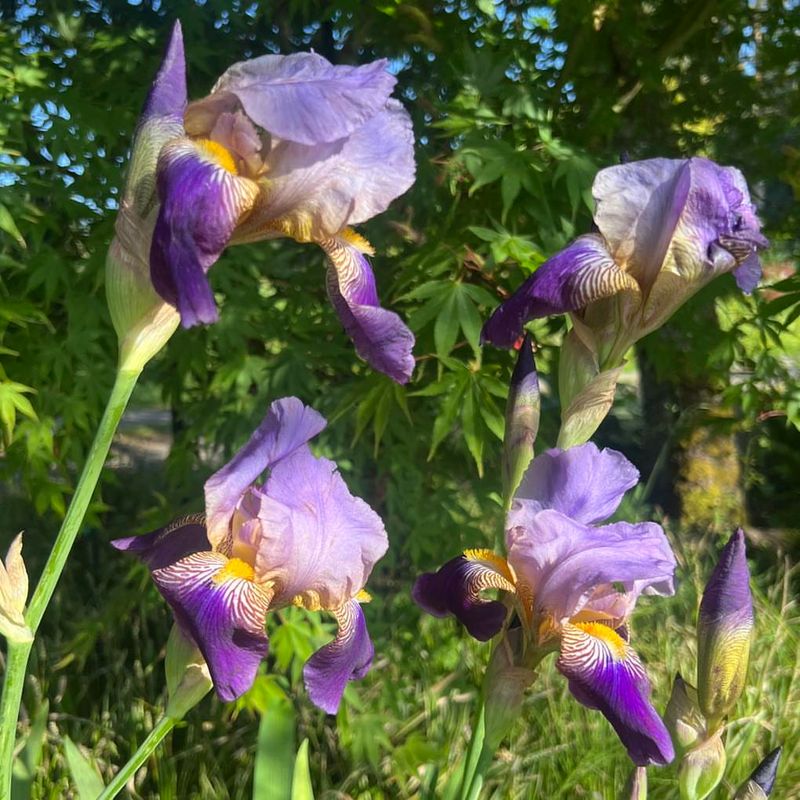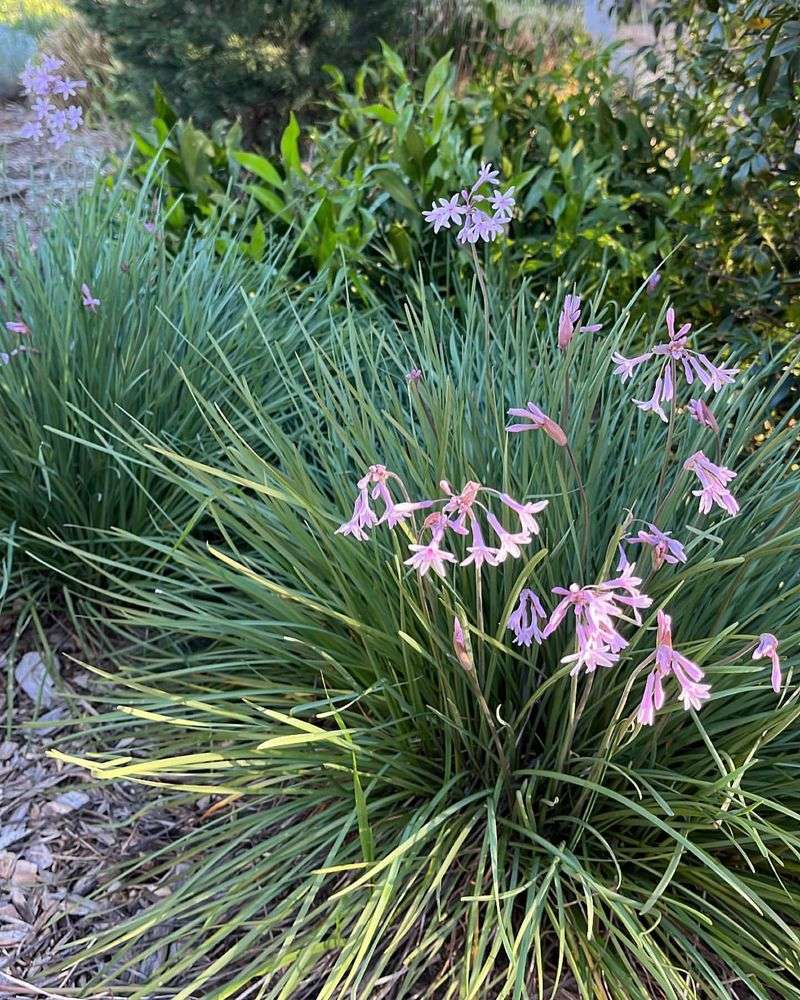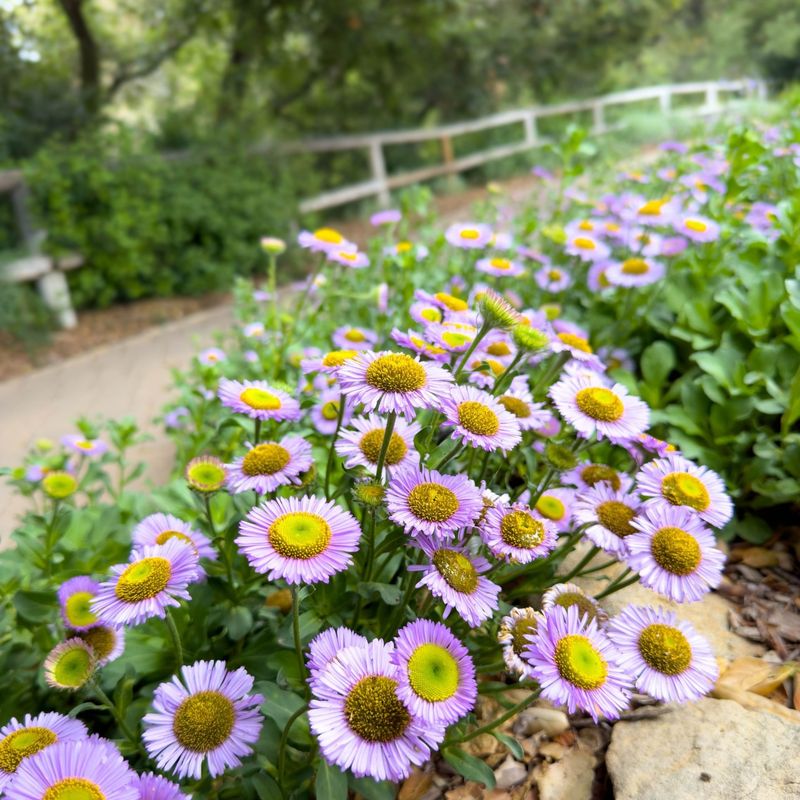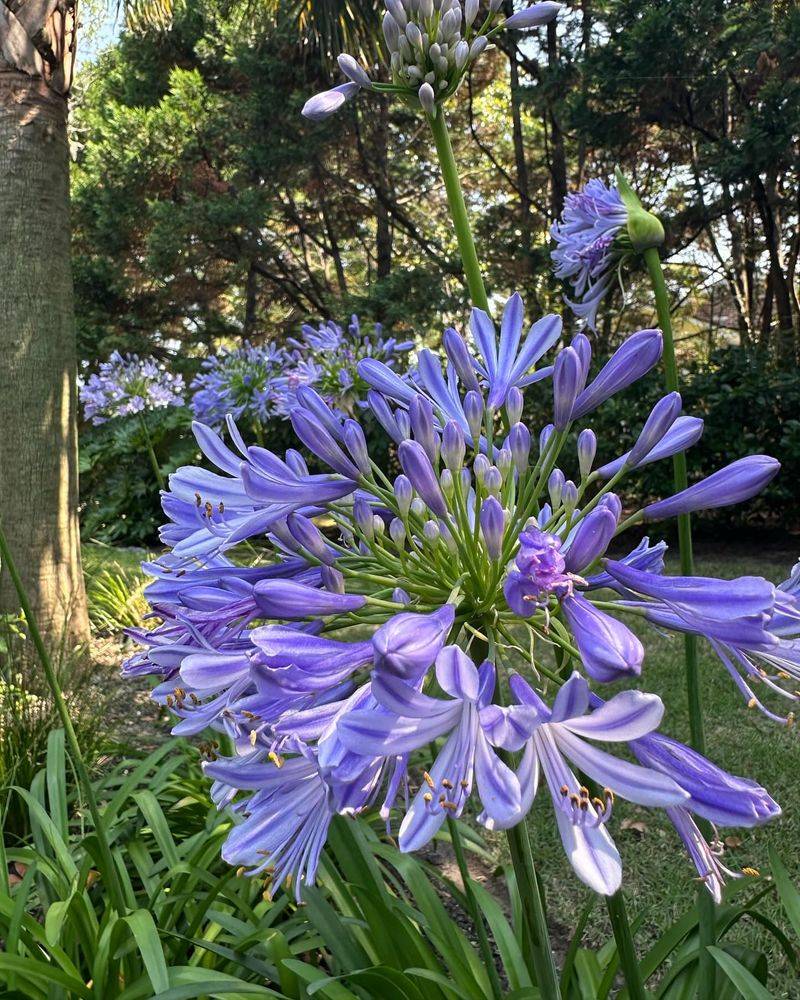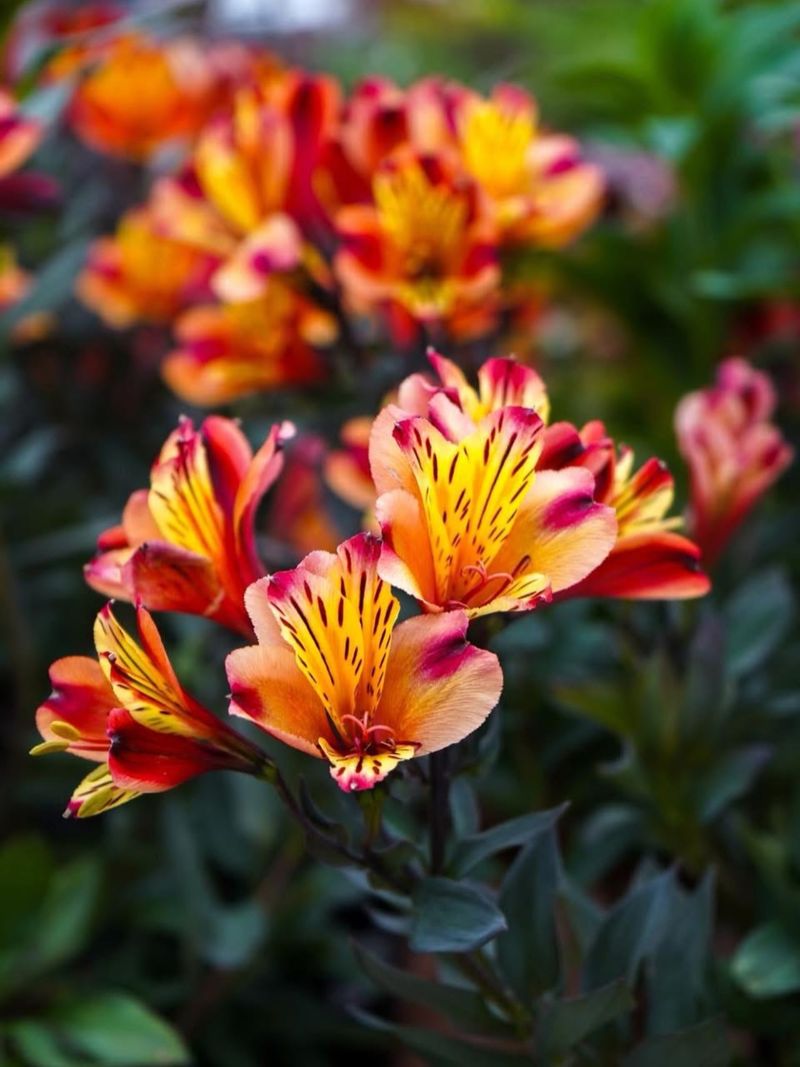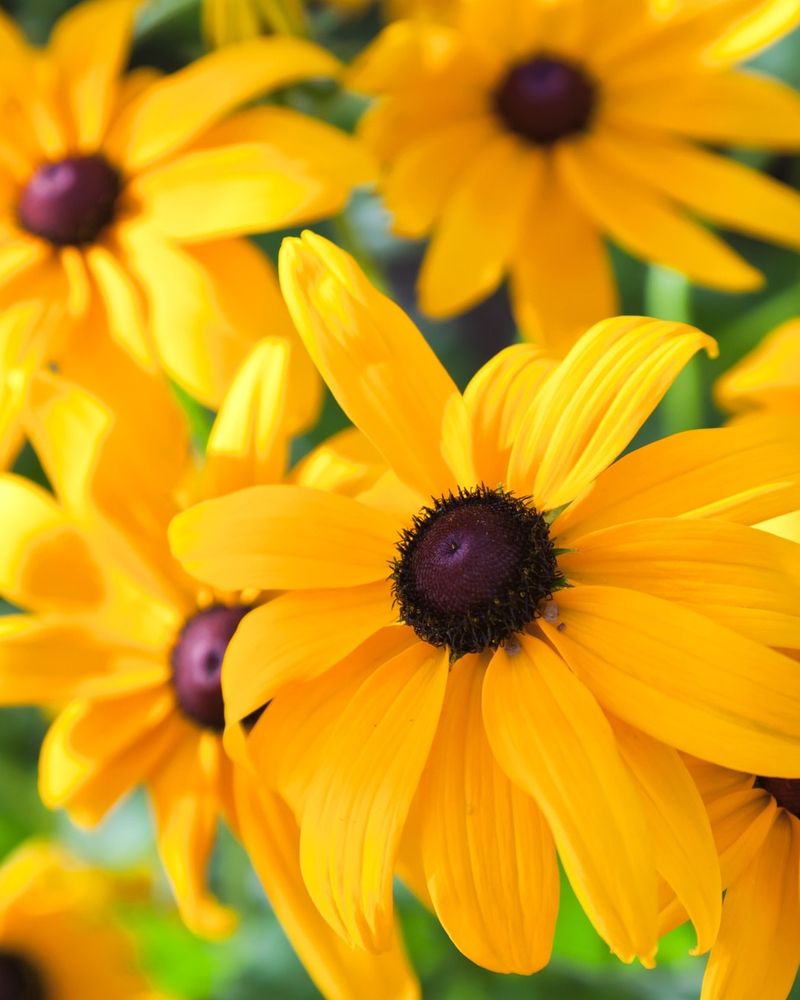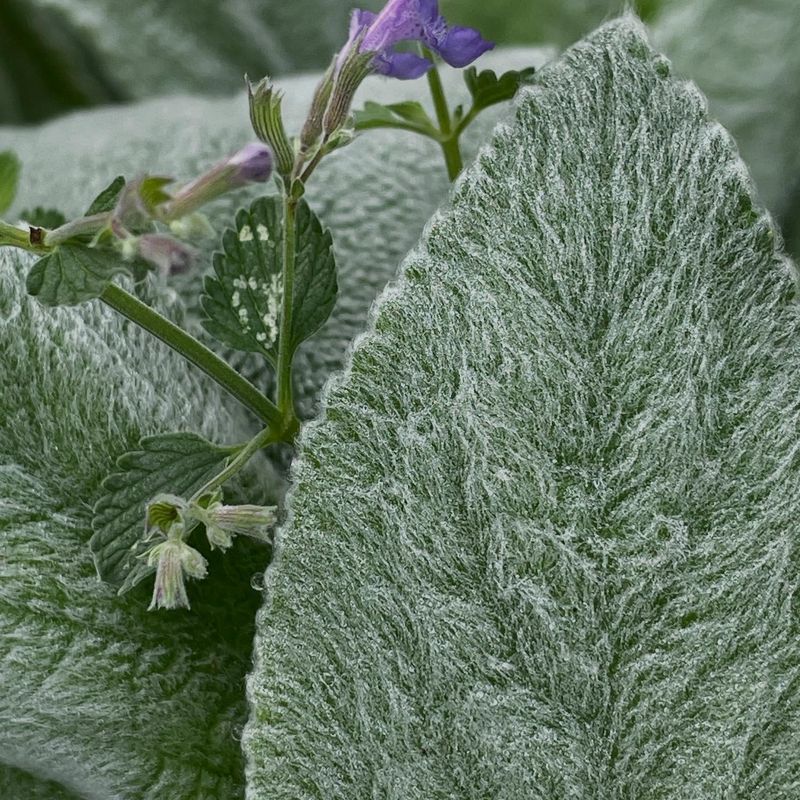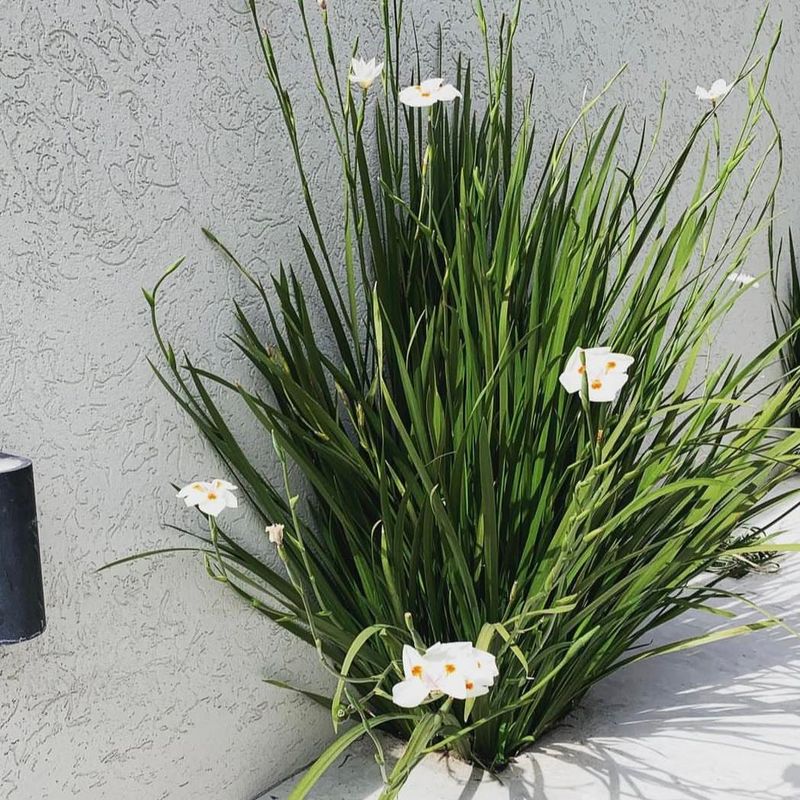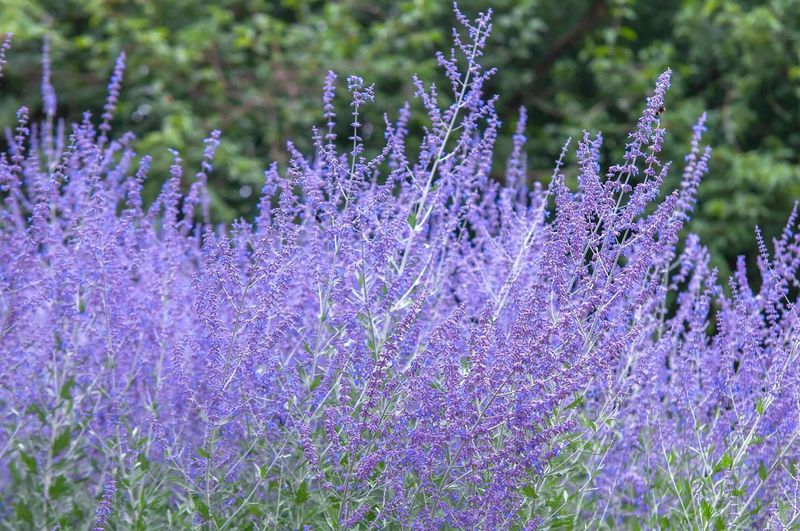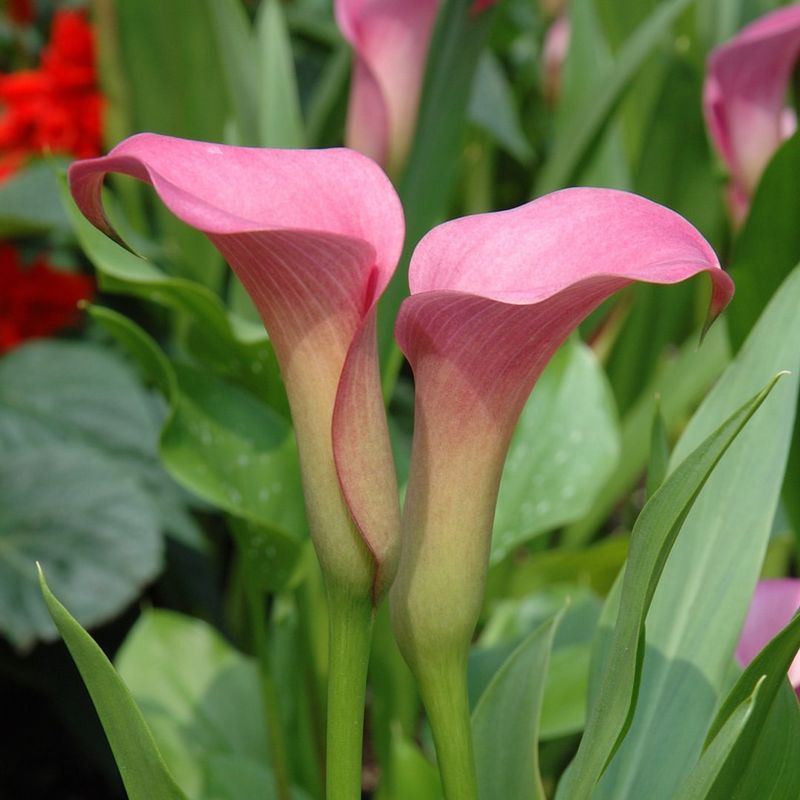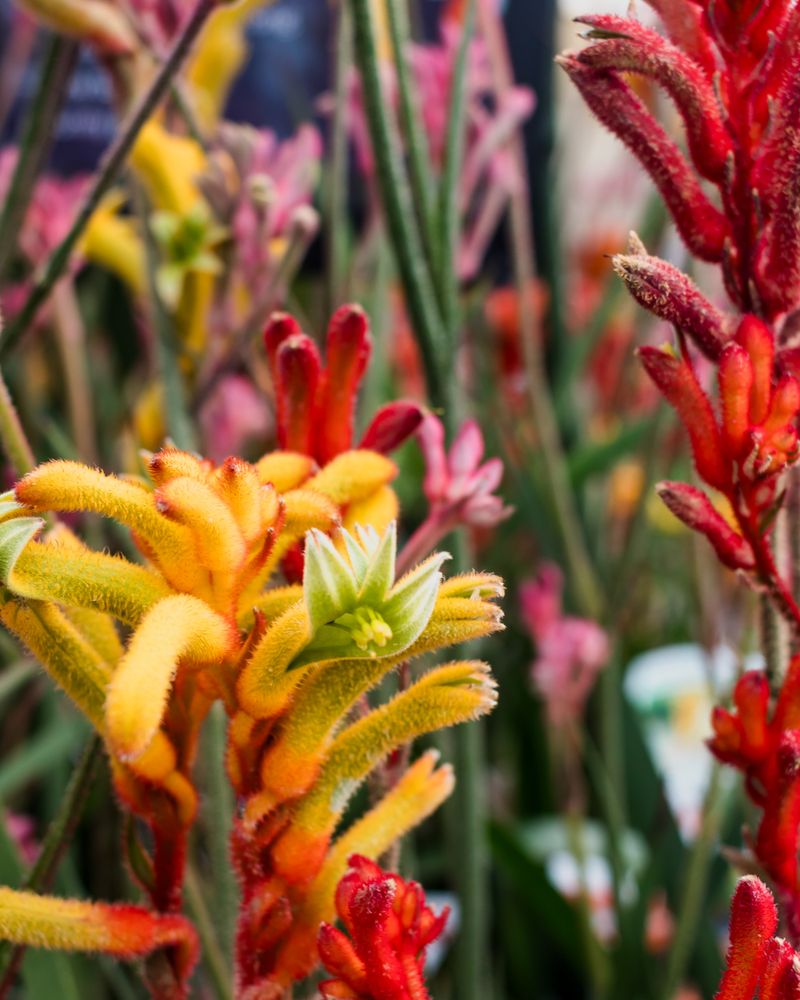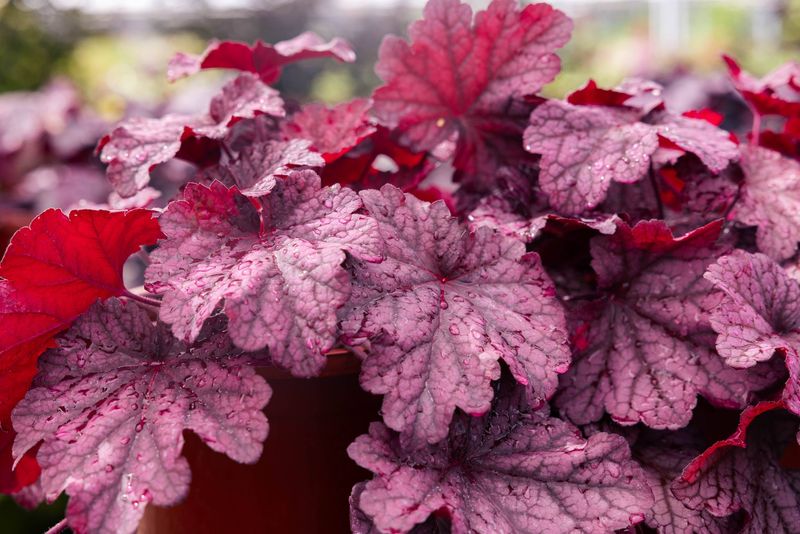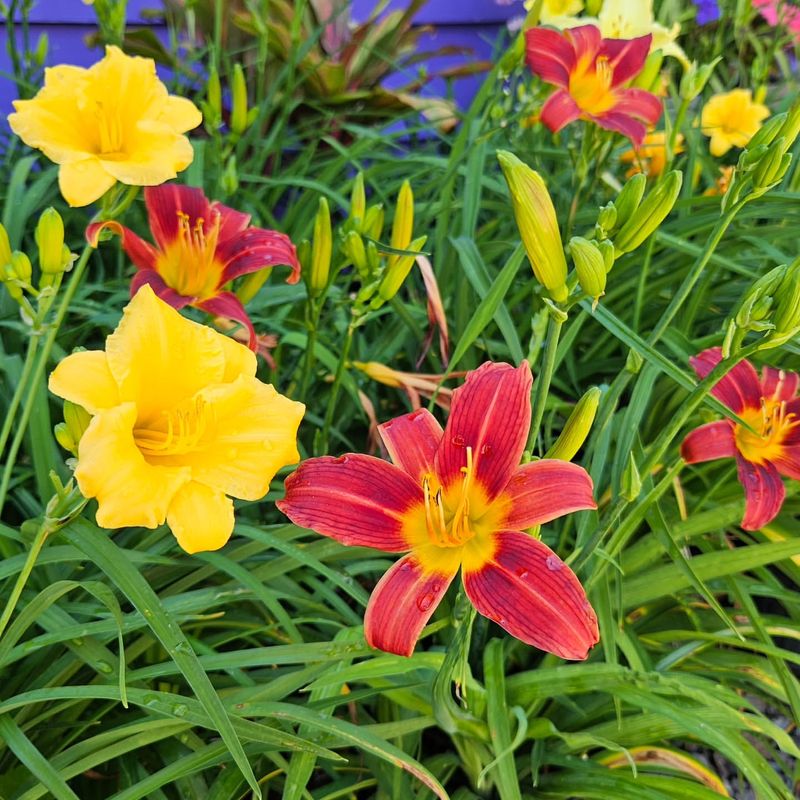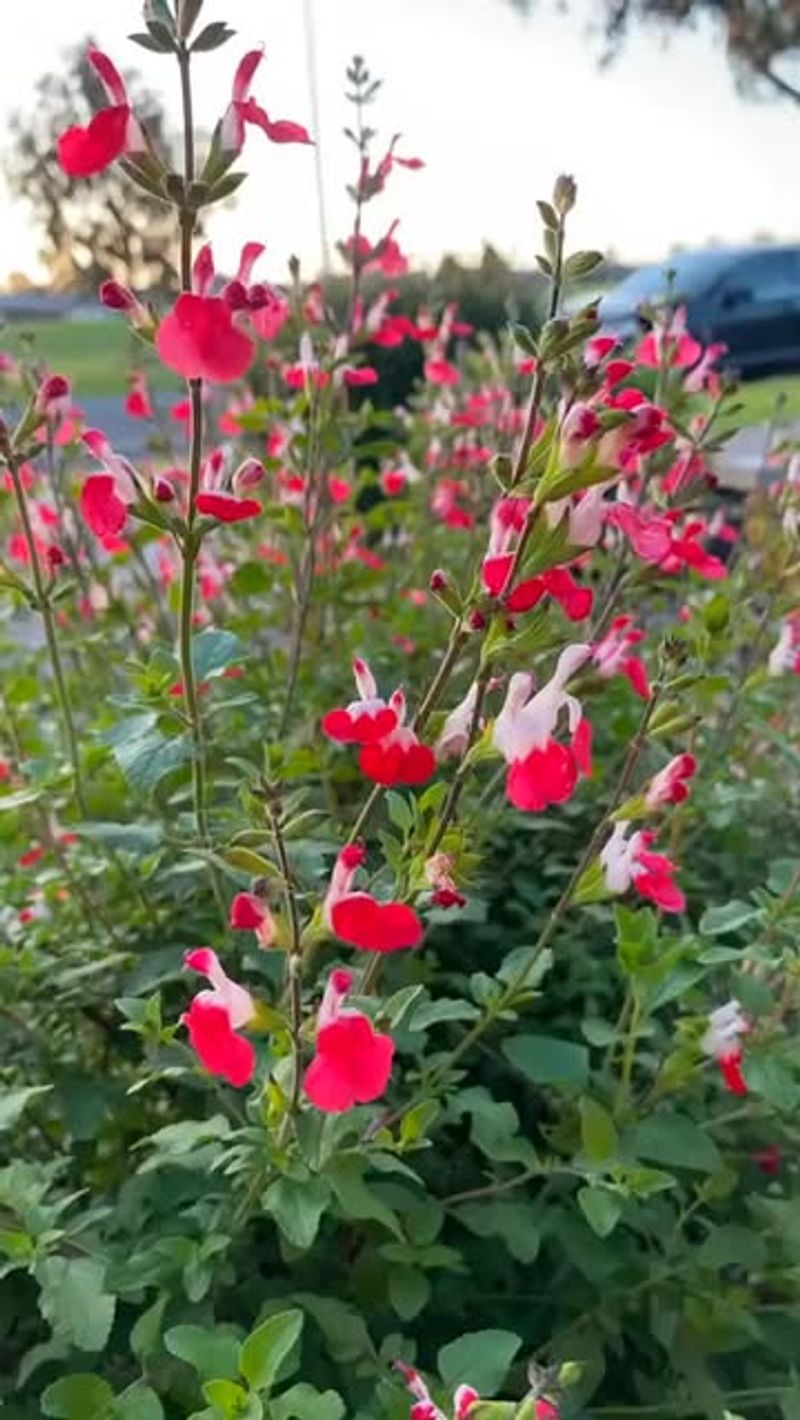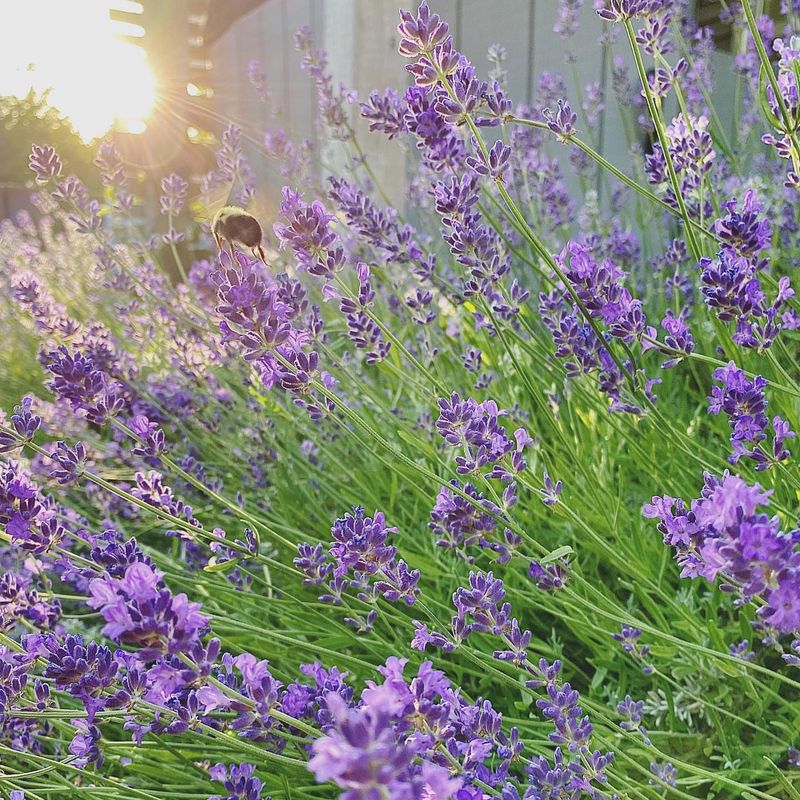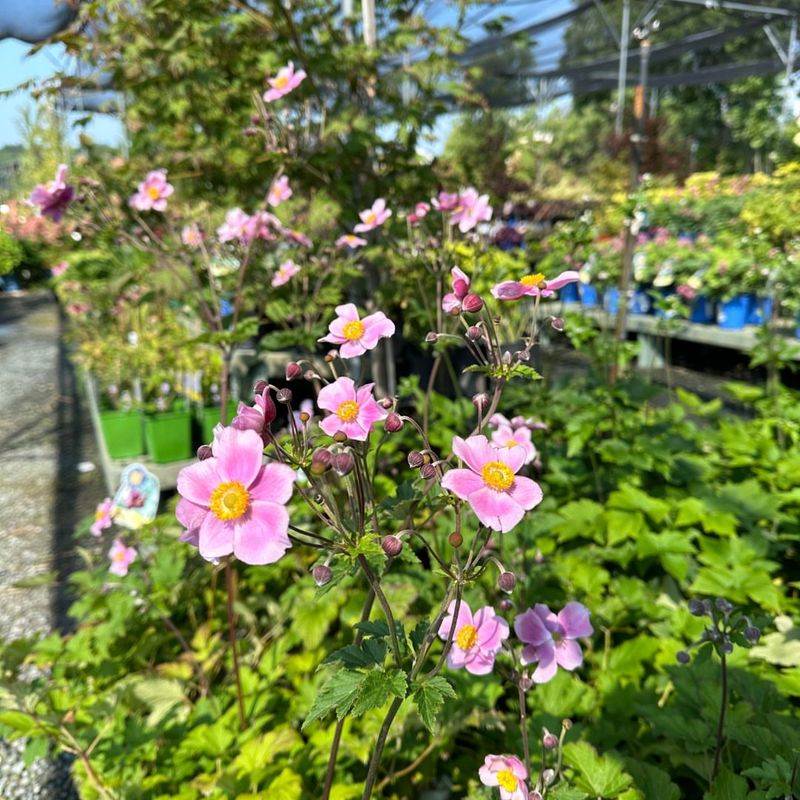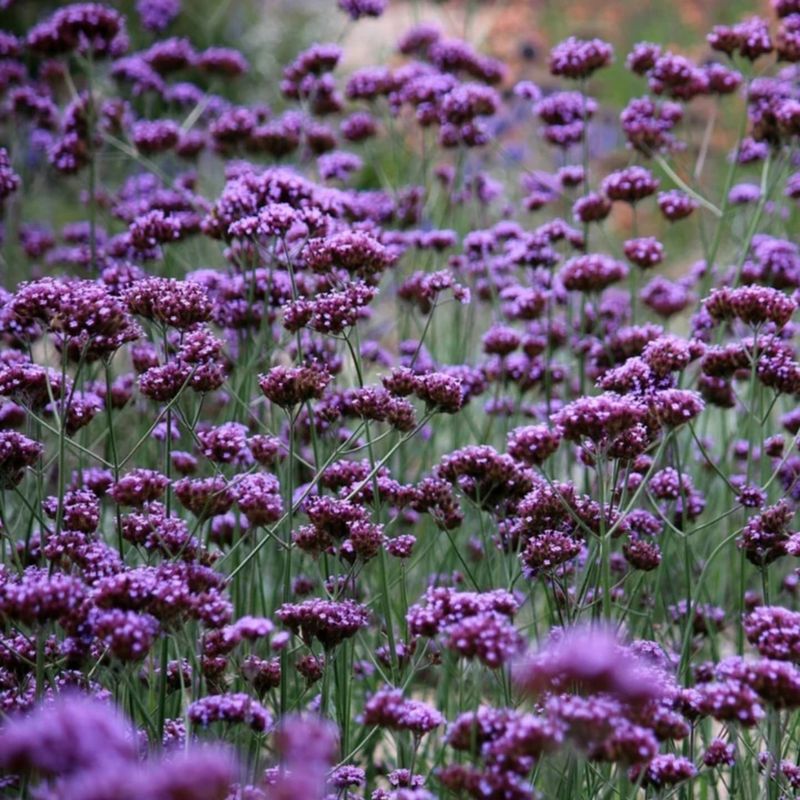California gardeners love plants that do the work for them! Self-multiplying perennials save time, money, and effort while creating lush, abundant gardens year after year.
These garden champions spread naturally through various methods like seeds, runners, or underground rhizomes, turning sparse spaces into flourishing landscapes without breaking your back or bank account.
1. California Poppy
Golden California poppies transform hillsides with their cheerful blooms each spring. Native to the Golden State, these iconic wildflowers self-seed prolifically, creating drifts of orange that return year after year.
Growing just 12-18 inches tall, they thrive in poor soil and drought conditions. Their feathery blue-green foliage adds texture even when not in bloom. Plant them in full sun areas where they can spread freely.
2. Yarrow
Yarrow’s flat-topped flower clusters attract butterflies while its vigorous rhizomes steadily expand its territory. Available in shades from white to yellow, pink, and red, this drought-tolerant native creates carefree patches of color.
Reaching 2-3 feet tall, yarrow handles poor soil with grace. The ferny foliage adds texture even when the plant isn’t flowering. Divide every few years to control spreading or share with friends.
3. Mexican Bush Sage
Velvety purple spikes crown this drought-tolerant beauty from late summer through fall. Mexican bush sage gradually expands its footprint through underground runners, creating impressive clumps over time.
Silvery-gray foliage provides year-round interest in mild California climates. Hummingbirds can’t resist the tubular flowers! Give it well-draining soil and full sun for best performance, then watch as it gradually fills in empty spaces.
4. Bearded Iris
Regal and dramatic, bearded irises multiply through underground rhizomes that gradually expand outward. Every few years, one plant becomes many, ready for dividing and replanting.
Their sword-like foliage provides structure all year, while spring brings spectacular blooms in virtually every color. Plant rhizomes just below the soil surface where they’ll receive at least 6 hours of sun daily. California’s dry summers suit them perfectly.
5. Society Garlic
Clusters of star-shaped lavender flowers dance above grassy foliage all summer long. Society garlic forms expanding clumps through underground offsets, gradually creating sweeping drifts of color and texture.
Despite its name, the foliage smells like garlic but the flowers offer a sweet fragrance. Thriving in Southern California’s coastal and inland gardens alike, it tolerates both drought and occasional neglect. Divide crowded clumps every few years to maintain vigor.
6. Santa Barbara Daisy
Tiny pink daisies blanket this low-growing spreader almost year-round in coastal California. Also called fleabane, Santa Barbara daisy gradually forms extensive mats through self-seeding and creeping stems.
Perfect for softening edges of walkways or spilling over walls, this carefree plant asks little beyond occasional trimming. Butterflies adore the simple flowers! Tolerant of coastal conditions including salt spray, it’s a staple in seaside gardens.
7. Lily of the Nile
Bold blue flower clusters rise on sturdy stems above strappy evergreen foliage. Lily of the Nile (Agapanthus) gradually forms impressive clumps through underground rhizomes, creating dramatic garden statements.
Nearly indestructible in California gardens, these South African natives thrive in both coastal and inland areas. The striking round flowerheads appear in summer, attracting butterflies and hummingbirds. Divide congested clumps every 4-5 years to maintain vigor and spread the bounty.
8. Alstroemeria
Spotted exotic blooms in shades of pink, orange, yellow, and white make alstroemeria a florist favorite. In California gardens, these Peruvian lilies spread steadily through underground tubers, forming ever-larger colonies of color.
Cut flowers last for weeks in vases! Plant them where they won’t crowd delicate neighbors. Rather than cutting stems, pull them with a gentle tug from the base – this encourages more blooms.
9. Black-Eyed Susan
Cheerful golden daisies with dark centers bring summertime sunshine to California gardens. Black-eyed Susans spread enthusiastically through both self-seeding and gradually expanding root systems.
Standing 2-3 feet tall, these native beauties attract butterflies and beneficial insects. Their informal charm suits cottage gardens and naturalistic landscapes. Deadhead spent flowers to control self-seeding or leave them for birds to enjoy the seeds and natural spread.
10. Lamb’s Ears
Velvety silver-gray leaves form soft, touchable mats that gradually expand in the garden. Children can’t resist petting the fuzzy foliage that gives lamb’s ears their name!
Tall spikes of purple flowers appear in summer, though many gardeners remove them to focus on the foliage. Thriving in California’s dry conditions, this drought-tolerant perennial spreads through both creeping stems and self-seeding. Plant in well-draining soil to prevent rot during winter rains.
11. Fortnight Lily
Architectural fans of sword-like leaves make fortnight lily (Dietes) a California landscape staple. White iris-like flowers with purple and yellow markings appear every two weeks during warm weather.
These South African natives form slowly expanding clumps through rhizomes. Virtually indestructible once established, they thrive in both sun and part shade throughout California. Their structural form works beautifully in contemporary landscapes and requires minimal care.
12. Russian Sage
Airy clouds of lavender-blue flowers hover above silvery stems from summer through fall. Russian sage gradually expands its territory through underground runners, creating dramatic drifts of color and texture.
Growing 3-4 feet tall and wide, this drought-tolerant beauty attracts bees and butterflies while deterring deer. The aromatic foliage smells wonderful when brushed against! Perfect for hot, dry areas of California gardens, it combines beautifully with ornamental grasses and succulents.
13. Calla Lily
Elegant white trumpets rise above glossy green foliage in spring and summer. Calla lilies spread steadily through underground rhizomes, creating ever-larger colonies in favorable conditions.
While white is classic, modern varieties offer yellow, pink, purple, and nearly black blooms. These South African natives thrive in California’s climate, especially in coastal areas. They appreciate regular moisture but established clumps can survive with less.
14. Kangaroo Paw
Fuzzy tubular flowers in red, yellow, orange, or green rise on tall stems above strappy foliage. Native to Australia, kangaroo paws have found a second home in California gardens, where they gradually form expanding clumps.
Hummingbirds can’t resist the unusual blooms! The distinctive flowers resemble a kangaroo’s paw, complete with fuzzy “toes.” Plant in well-draining soil where they’ll receive full sun. Divide congested clumps every few years.
15. Coral Bells
Colorful scalloped leaves in shades of purple, red, orange, or silver form slowly expanding mounds of year-round interest. Coral bells (Heuchera) spread gradually through underground stems, creating larger patches over time.
Delicate sprays of tiny bell-shaped flowers appear on wiry stems above the foliage. California native varieties thrive with minimal water once established. Plant in morning sun with afternoon shade in hotter regions, or full sun along the coast.
16. Daylily
Trumpet-shaped blooms in virtually every color except true blue adorn these garden workhorses. Daylilies steadily multiply through underground tubers, gradually forming impressive clumps that can be divided to spread throughout the garden.
Though each flower lasts just one day (hence the name), each plant produces many buds over a long season. Remarkably adaptable to different California climates, from coastal fog to inland heat. Divide congested clumps every 3-4 years to maintain vigor.
17. Salvia ‘Hot Lips’
Bicolor red and white flowers that resemble puckered lips make this salvia an attention-grabber. ‘Hot Lips’ gradually expands its footprint through both self-seeding and slowly spreading roots.
Hummingbirds flock to the tubular blooms that appear from spring through fall. The aromatic foliage deters deer and rabbits. Native to Mexico, this drought-tolerant beauty thrives throughout California, especially in coastal and foothill regions.
18. Lavender
Fragrant purple flower spikes rise above silvery foliage, filling the air with their signature scent. Lavender gradually expands through both self-seeding and slowly spreading roots.
Spanish and French varieties thrive in California’s Mediterranean climate. The aromatic oils deter deer and rabbits while attracting bees and butterflies. Plant in full sun with excellent drainage – they hate wet feet! Prune after flowering to maintain shape and encourage bushier growth.
19. Japanese Anemone
Graceful pink or white flowers dance on tall stems in late summer when many other perennials have finished blooming. Japanese anemones spread steadily through underground runners, gradually creating impressive colonies.
Perfect for brightening partially shaded areas, these elegant plants combine beautifully with ferns and hostas. Their spreading nature makes them ideal for woodland gardens or naturalized areas. In California, they appreciate afternoon shade in hotter inland areas.
20. Verbena
Clusters of tiny purple, pink, or white flowers cover these low-growing spreaders from spring through fall. Perennial verbenas gradually form extensive mats through both self-seeding and creeping stems that root where they touch soil.
Butterflies adore the nectar-rich blooms! Heat and drought-tolerant once established, verbenas thrive in California’s sunny climate. Plant along borders, in rock gardens, or where they can spill over walls. Trim occasionally to encourage fresh growth and more flowers.

